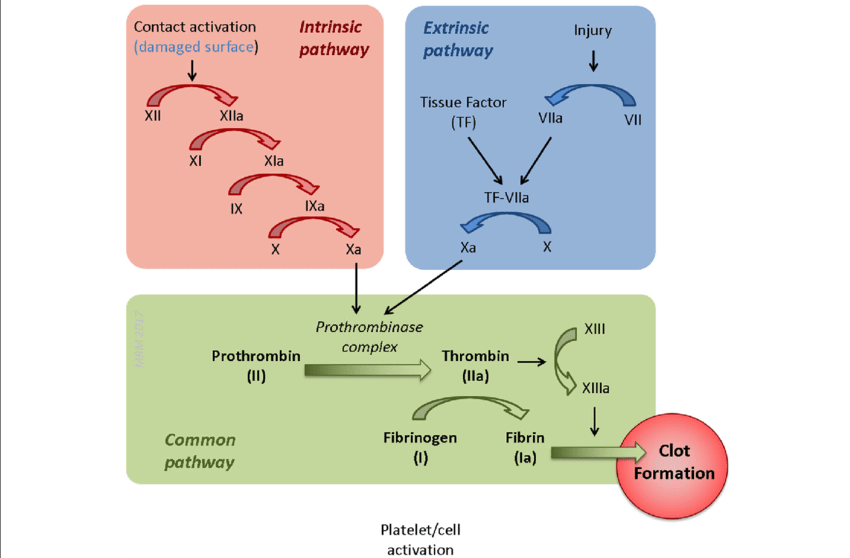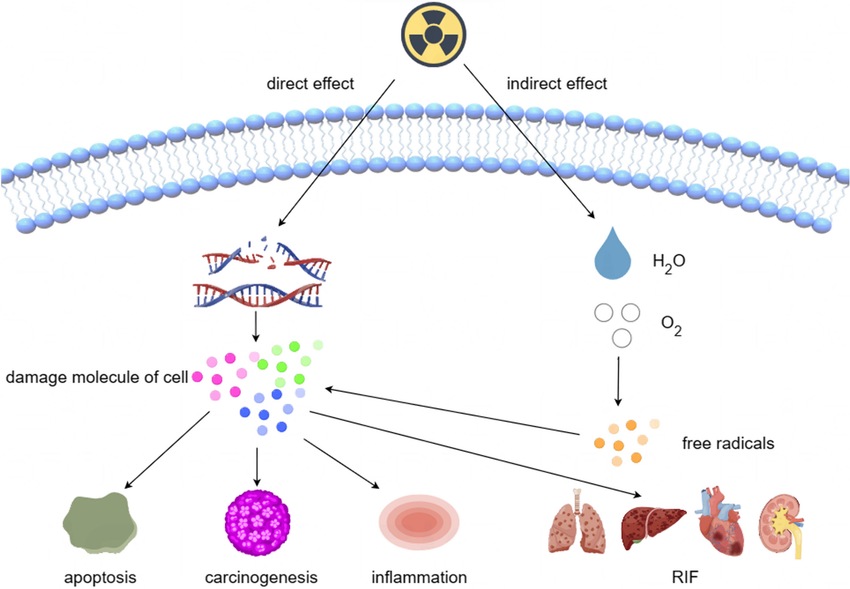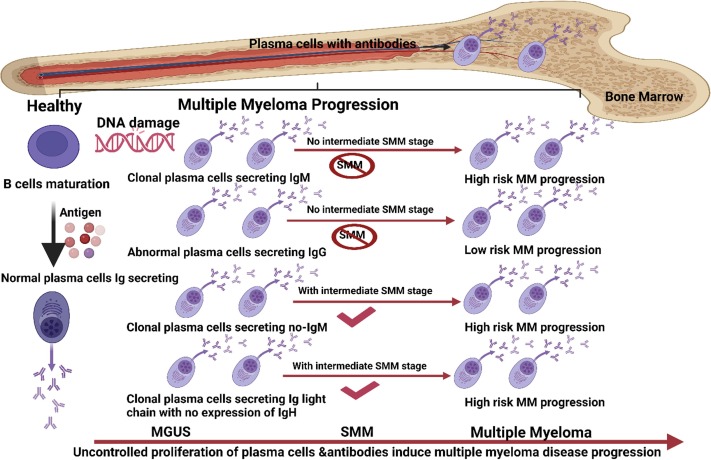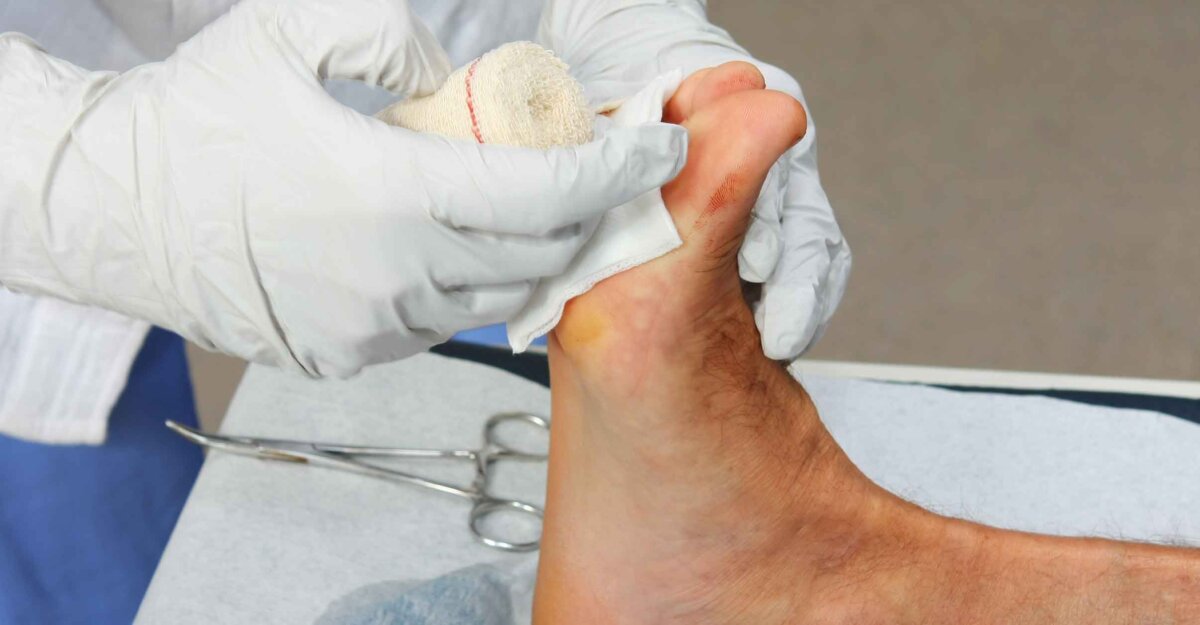
Intrinsic Pathway of Clotting
The intrinsic pathway of coagulation is one of the two primary pathways that lead to blood clot formation, the other being the extrinsic pathway. The intrinsic pathway is initiated when blood comes into contact with negatively charged surfaces, such as exposed collagen from damaged blood vessels. This pathway involves several clotting factors and is characterized by a series of enzymatic reactions.
- Activation: The intrinsic pathway begins with the activation of Factor XII (Hageman factor) upon contact with negatively charged surfaces.
- Cascade Reaction: Activated Factor XII (XIIa) activates Factor XI (XIa), which in turn activates Factor IX (IXa).
- Formation of Tenase Complex: Factor IXa, along with its cofactor Factor VIIIa, forms the tenase complex on the surface of activated platelets. This complex catalyzes the conversion of Factor X to Xa.
- Common Pathway Initiation: Activated Factor X (Xa) then combines with Factor Va to form prothrombinase, leading to the conversion of prothrombin (Factor II) into thrombin (Factor IIa).
Extrinsic Pathway of Clotting
The extrinsic pathway is initiated by external trauma that causes vascular injury and exposes tissue factor (TF), also known as thromboplastin, which is present in subendothelial tissues.
- Activation: When blood vessels are damaged, tissue factor is released and binds to circulating Factor VII.
- Formation of TF-VIIa Complex: The tissue factor-Factor VII complex activates Factor X directly, converting it into Xa.
- Common Pathway Initiation: Similar to the intrinsic pathway, activated Factor X (Xa) then combines with Factor Va to form prothrombinase, leading to thrombin generation.
The extrinsic pathway is typically faster than the intrinsic pathway and serves as a crucial initial response to vascular injury.
Clotting Factors
Clotting factors are proteins in blood plasma that play essential roles in hemostasis and coagulation. Here’s a list of key clotting factors:
- Factor I – Fibrinogen
- Factor II – Prothrombin
- Factor III – Tissue factor or thromboplastin
- Factor IV – Calcium ions
- Factor V – Proaccelerin or labile factor
- Factor VII – Proconvertin or stable factor
- Factor VIII – Antihemophilic factor A
- Factor IX – Christmas factor or antihemophilic factor B
- Factor X – Stuart-Prower factor
- Factor XI – Plasma thromboplastin antecedent
- Factor XII – Hageman factor
- Factor XIII – Fibrin-stabilizing factor
Clinical Conditions Due to Deficiency of Clotting Factors
Deficiencies in specific clotting factors can lead to various bleeding disorders:
- Hemophilia A: Caused by deficiency in Factor VIII.
- Hemophilia B: Caused by deficiency in Factor IX.
- Von Willebrand Disease (VWD): Associated with deficiencies or dysfunctions in von Willebrand factor.
- Christmas Disease (Hemophilia B): Caused by deficiency in Factor IX.
- Hypoprothrombinemia: Resulting from a deficiency in prothrombin (Factor II).
- Labile Factor Deficiency (Factor V Deficiency): Rare bleeding disorder due to lack of functional Factor V.
Von Willebrand Disease (VWD)
Von Willebrand Disease is an inherited bleeding disorder caused by a deficiency or dysfunction of von Willebrand factor (vWF), which plays a critical role in platelet adhesion and aggregation during hemostasis.
- There are three main types:
- Type 1: Partial quantitative deficiency of vWF.
- Type 2: Qualitative defects affecting vWF function.
- Type 3: Severe quantitative deficiency leading to very low levels of vWF.
Symptoms include easy bruising, frequent nosebleeds, heavy menstrual periods, and prolonged bleeding after injuries or surgeries.
Hemophilia
Hemophilia refers primarily to two genetic disorders characterized by deficiencies in specific clotting factors:
- Hemophilia A: Caused by a deficiency in coagulation Factor VIII; it is more common than Hemophilia B and affects mainly males due to its X-linked recessive inheritance pattern.
- Hemophilia B: Also known as Christmas disease; it results from a deficiency in coagulation Factor IX and has similar symptoms as Hemophilia A but occurs less frequently.
Individuals with hemophilia experience prolonged bleeding episodes after injuries or surgeries and may have spontaneous bleeding episodes without apparent cause.







